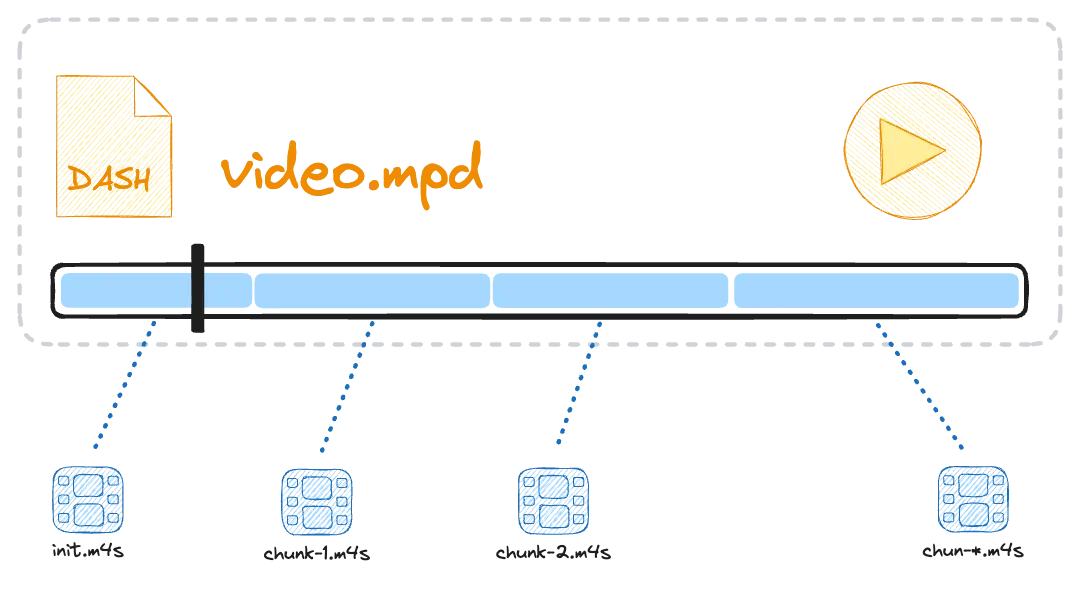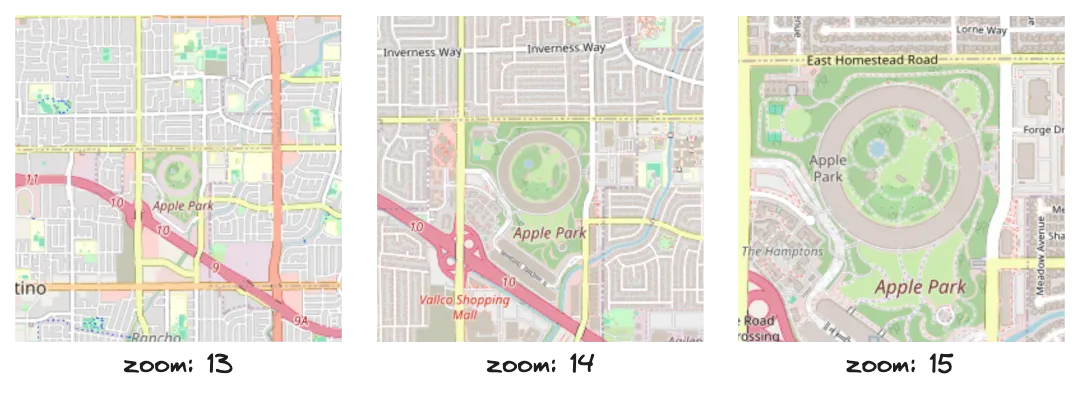
Subscribe to our free newsletter, just 30 minutes for everything you need to learn.
Video Streaming with DASH
Have you ever wondered how to build a video playback feature like YouTube, where videos seamlessly adjust quality based on your internet connection?
 0991
0991
React-Query Data Fetching
React Query, also known as TanStack Query, is a powerful library designed to simplify data fetching, caching, and state management in React applications.
What are React Portals, and why are they so powerful for managing UI complexity?
Build a Tile-Based Google Map with JavaScript
Ever wondered how Google Maps loads and zooms so smoothly? While their full system is massively complex, the fundamental idea behind map display is surprisingly approachable.

In JavaScript, a prototype chain is a fundamental concept that enables inheritance between objects. It's a way for an object to inherit properties and behavior from another object, allowing for code reuse and modularity.
Explain the purpose of React.memo and useMemo in React, and how they contribute to performance optimization.
Explain the purpose of React.memo and useMemo in React, and how they contribute to performance optimization.
Describe the concept of CSS Containment and explain how it can enhance performance in web applications.
What's the difference between state and props in React?
How do variable fonts enhance web typography and performance?
What is the difference between synchronous and asynchronous code execution in JavaScript?
What are CSS Houdini APIs and how can they be used to extend the capabilities of CSS?
What is the difference between controlled and uncontrolled components in React?
How do you set up a service worker for a Progressive Web App (PWA)?
What are JavaScript Generators and how do they function?
How do the :has() and :is() selectors simplify complex CSS selections?
What are some strategies for optimizing a React application's performance?
How to ensure accessibility in your web applications?
How does JavaScript manage memory allocation and deallocation?
What are CSS cascade layers and what are their use cases?
How are side effects managed in a React functional component?
What is a Content Delivery Network (CDN) and how does it work?
What is currying in JavaScript, and how does it work?
What are the benefits of using CSS variables and provide an example?
What are React hooks and what makes them useful?
What are React hooks and what makes them useful?
What are JavaScript Proxies and what are their potential use cases?
How to ensure a website's design remains consistent across different browsers?
What strategies do you use for state management in large-scale React applications?
How to ensure a website's design remains consistent across different browsers?
What is hoisting in JavaScript?
How can you create a tooltip that appears on hover using only CSS?
What is lazy loading and how does it improve performance?
How can you implement a dark mode feature in a website using only CSS?
How can you optimize images for web performance?
Explain CSS custom properties (variables) and how they differ from preprocessor variables.
Explain the concept of Web Components and how they differ from traditional HTML elements.
What are WeakMap and WeakSet in JavaScript, and how do they differ from Map and Set?
How to achieve responsive web design using only CSS?
Describe how you would optimize a website for better performance.
Explain CSS specificity and how it determines which styles are applied to elements.
Explain the differences between block, inline, and inline-block elements in HTML.
What's the difference between == and === in JavaScript, and why is it important?
What are the Empty Elements in HTML? What are their characteristics and how do they differ from other elements?
Explain how Flexbox works and describe scenarios where it would be the most appropriate layout method.
Explain the concept of the Virtual DOM and how it functions in React.
What are the key differences between var, let, and const in JavaScript?
What is a CSS preprocessor, and what are the advantages of using one?
Describe the event bubbling and event capturing phases in JavaScript event handling.
Explain Cross-Origin Resource Sharing (CORS) and why it is important for web security.
Creating Objects in JavaScript
In JavaScript, there are several ways to create objects. Here, we'll explore the most common methods:
The simplest way to create an object is by using object literal notation.
const person = {
name: 'John Doe',
age: 30,
occupation: 'Software Developer'
};
This method is concise and readable, making it a popular choice among developers.
Object ConstructorYou can also create objects using the Object constructor.
const person = new Object({
name: 'Jane Doe',
age: 25,
occupation: 'Software Developer'
});
While this method is supported, it's generally considered less readable and less concise than object literal notation.
Object.create() MethodThe Object.create() method creates a new object that inherits from an existing object (the prototype).
const person = Object.create({
name: 'John Doe',
age: 30,
occupation: 'Software Developer'
});
person.name = 'Jane Doe'; // This will override the original property
console.log(person); // Output: { name: 'Jane Doe', age: 30, occupation: 'Software Developer' }
Note that this method can be useful in certain situations where you want to create a new object with a specific prototype chain.
You can also use the assignment operator (=) to create an object.
const person = {
name: 'John Doe',
age: 30,
occupation: 'Software Developer'
};
This method is essentially equivalent to using object literal notation.
With the introduction of classes in ECMAScript 2015, you can create objects using class syntax.
class Person {
constructor(name, age) {
this.name = name;
this.age = age;
}
}
const person = new Person('Jane Doe', 25);
While classes provide a more structured approach to object creation, they're not supported in older browsers and require transpilation or polyfills.
In conclusion, the most commonly used method for creating objects in JavaScript is object literal notation. However, understanding the other methods can help you choose the best approach for your specific use case.